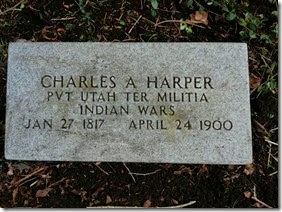Later this month, as they do every few years, a group of volunteers in Durham, North Carolina, including some city and county officials, will invest some time and “elbow grease” to tidy the historic Geer Cemetery.
It is an all-black burial ground was established in 1877, twenty years before the U.S. Supreme Court endorsed “separate-but-equal” laws in the South, known as Jim Crow laws. In many states, that even included segregation after death.
Geer had fallen into such disrepair, that four years after that 1896 decision, the 10-month-old Durham Sun opined in an effort to get the city to restore this hallowed place.
But 115 years after that editorial, the City of Durham still finds excuses as to why that can’t happen.
Rather than racism, I suspect it has much more to do with bureaucratic inertia enabled by a reticence found commonly which is that asking questions is associated with criticism and “rocking the boat” with retribution.
This cultural affliction is very difficult to root out and inhibits private as well as public entities. In my observation, it is most often the culprit holding organizations back from being more innovative.
This will be the fourth or fifth time in my 26 years of residence that volunteers have filled the city void. Geer Cemetery is only a few blocks from my first house here on Shawnee Street in the Old North Durham neighborhood.
I grew to know the old cemetery during morning walks there with our dog at the time, named Jack.
On an April morning walk less than a year after my arrival, I saw members of the former Durham Service Corps (DSC) working to rehabilitate the old cemetery, a project documented in the report Reclaiming Yesterday.
Volunteers set to do the same thing next month are well advised to click on this link and read the report.
Resurrected, the DSC would be a more strategic, comprehensive and sustainable approach to both the issue of youth employment as well as maintenance of commons such as Geer Cemetery.
There are many benefits to engaging volunteers including a sense of community, physical activity and camaraderie, as well as bringing greater awareness to issues.
But a disconnect occurred about thirty years ago when governments at all levels, including those in Durham, seemed to forget that matching grants such as the one meant to pilot DCS as well as volunteerism are not mean to replace caretaking but to supplement it.
It isn’t that simple when it comes to cemeteries.
When it comes to a true census of cemeteries, it is volunteers including genealogists across the country who work hard to track cemeteries including hundreds in Durham County alone, mapped and maintained on the web by Allen Dew who partners with the Durham-Orange society.
Only a couple fall under the stewardship of the City of Durham.
Keep in mind that even progressive counties such as Durham didn’t begin the practice of issuing death certificates until 1908, a practice not required across North Carolina until 1913, a decade after that chide in the Durham Sun newspaper.
Some cemeteries here are incorporated with places of worship but most are small family plots including those I see seemingly protected in the right-of-ways along roadsides as I ride my Harley.
I grew fond of cemeteries beginning when I was age three as I would tag along with my parents up the hill behind the horse barn to a small cemetery carved out of our ancestral ranch to maintain the graves of many of my ancestors.
I even remember that it was while visiting the small historic cemetery next to a former Jesuit Seminary on a bluff high above Spokane, Washington one Saturday in 1973 that my daughter and only child decided it was time to be born, resulting in a mad dash down the mountain to the hospital.
Volunteers today also staff a website entitled “Find A Grave,” carefully curating cemeteries and individual gravesites on the web. The nation-wide effort was founded in 1995 in Salt Lake City by Jim Tipton before being absorbed a few years ago into Ancestry.com.
The gravestone shown here in Holliday is that of one of my great-great grandfathers but it isn’t the original one. One of that community’s first settlers, he was buried there in 1900 but by the late 1980s the old cemetery was in need of rehabilitation including replacement of headstones.
My maternal grandfather rescued the original marker and delivered it on a trip near the end of his life to my sister in Enumclaw, Washington, where as shown in the image in this blog, it rests in her garden.
Cities first began creating public cemeteries in 1831 and they soon they became viewed as the nation’s first public parks. In fact, seeing how popular they were inspired cities two decades later to begin creating open and forested spaces dedicated as parks.
Just as WWII broke out in Europe, the Durham County health department closed Geer Cemetery in 1939 because it had become over crowded, although a burial or two was still held there until 1944.
It would be another decade before the U.S. Supreme Court would put an end to segregation, although segregationist candidates would continue to openly run and be elected in states such as North Carolina up through the 1990s.
Standing as a reminder of intolerance and our country’s ongoing struggle to overcome bigotry, historic Geer Cemetery deserves more of our recognition and respect including the city and county.
No comments:
Post a Comment